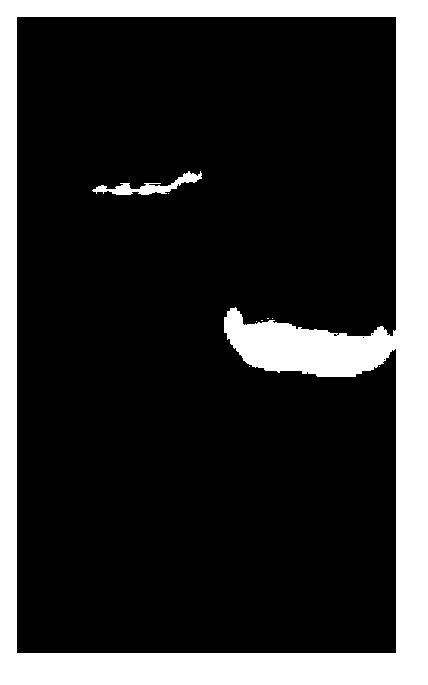Ribonucleic acid (RNA) interference vector for bovine genome locus specificity recombination, vector construction method and application
An RNA interference and site-specific technology, applied in the field of RNA interference vectors and their construction, can solve the problems of direct and accurate positioning of the inability to insert the position, affecting the expression of the target gene, and affecting the research of transgenic animals.
- Summary
- Abstract
- Description
- Claims
- Application Information
AI Technical Summary
Problems solved by technology
Method used
Image
Examples
Embodiment 1
[0074] Example 1 A method for constructing an RNA interference vector for site-specific recombination of the bovine genome
[0075] 1. Experimental materials
[0076] Bovine liver tissue: purchased from an experimental animal supply base in Gansu
[0077] iαv-pENTR / U6: preserved by our laboratory (refer to the literature "Lentviral-mediated RNAi to inhibit target gene expression of the porcine integrin av subunit, the FMDV receptor, and against FMDV infection in PK-15cells")
[0078] PGT-V1: Sponsored by Teacher Wang Huayan from Northwest A&F University (refer to the literature "Construction and Functional Identification of Double Screening Marker Targeting Vector")
[0079] pORF9-HSV1tk: purchased from Invitrogene
[0080] Multiple cloning restriction sites, related primers used in the experiment: synthesized by Shanghai Bioengineering Co., Ltd.
[0081] Various kits used in the experiment were purchased from Bao Biological Engineering (Dalian) Co., Ltd., and restriction e...
Embodiment 2
[0133] Embodiment 2 Application of the carrier of the present invention in the construction of transgenic bovine-derived cells
[0134] 1. Construct a bovine cell silencing expression vector for expressing shRNA (for bovine ITGB3NM_001206490) and inserting it into a specific position in the bovine cell genome through homologous recombination
[0135] (1) Use ClaI and SfiI to double digest the vector to expose the cohesive end between the U6 promoter and the termination signal on PBKN-U6. The reaction conditions were 1*NEB Buffer4, 100 μg / ml BSA, ClaI and SfiI enzymes were added at the same time, 30°C for 1.5h, and then the temperature was adjusted to 50°C for 1.5h, and the digested product was recovered.
[0136] (2) Synthesize the DNA sequence required to transcribe shRNA, such as Figure 10 Shown:
[0137] (3) Ligate the synthesized fragments with the digested PBKN-U6, transform the ligated products, pick positive clones for sequencing verification, and the sequencing prim...
PUM
| Property | Measurement | Unit |
|---|---|---|
| Amplified length | aaaaa | aaaaa |
Abstract
Description
Claims
Application Information
 Login to View More
Login to View More - R&D
- Intellectual Property
- Life Sciences
- Materials
- Tech Scout
- Unparalleled Data Quality
- Higher Quality Content
- 60% Fewer Hallucinations
Browse by: Latest US Patents, China's latest patents, Technical Efficacy Thesaurus, Application Domain, Technology Topic, Popular Technical Reports.
© 2025 PatSnap. All rights reserved.Legal|Privacy policy|Modern Slavery Act Transparency Statement|Sitemap|About US| Contact US: help@patsnap.com



